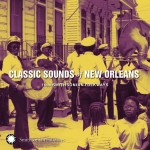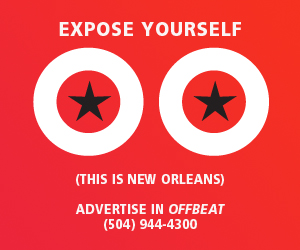 This collection from Smithsonian Folkways does what any visit to our origins should: broaden the mind. Beyond the sonic revelations, these recordings remind musicologists that the streets and churches are the source of New Orleans’ revolutionary sounds.
This collection from Smithsonian Folkways does what any visit to our origins should: broaden the mind. Beyond the sonic revelations, these recordings remind musicologists that the streets and churches are the source of New Orleans’ revolutionary sounds.
Take a 1956 Mardi Gras Indians recording including the Second Ward Hunters and Third Ward Terrors recorded by Samuel Charters. The chants are uncannily familiar, but ask yourself: when’s the last time you heard a recording of Indians on parade? Not a funk fusion, but audio from Mardi Gras 2008 or a recent rehearsal? Even now, analyzed and televised like never before, we take for granted and homogenize a sound that remains as mysterious as it did 50 years ago.
Doc Paulin’s brass band walks us to and from the cemetery, a definitive dirge/march from 1980. Again, a priceless demonstration, particularly for virgin ears. But why aren’t we taping and shipping out the second line sounds of Uptown, 2010? We live in a watershed period for brass band innovation and civic importance. The rest of the world should know that!
Other stunners: solo Baby Dodds; Sister Dora Alexander’s voice; the pianists Roosevelt Sykes, Champion Jack Dupree and Sweet Emma; and two tracks reminding us how lucky we were to coexist with Snooks Eaglin.
Always so bound up in the past, the city’s present—its background noise, amateur voices, geniuses, all of it—deserves a chance to impact the future. The canon won’t gather dust if we keep supplementing it with life. This latest message from the vault is clear: get out there and record your world, New Orleans.




